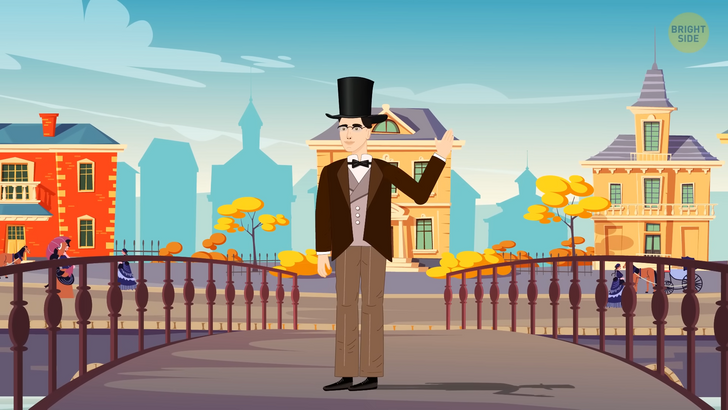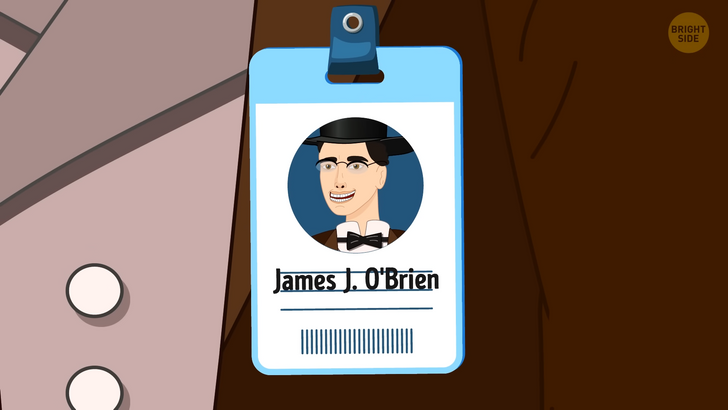I Refuse to Babysit My Sister’s Kids, Because She Scammed Me

Calls, internet pages, malicious links — those are the ways someone can scam you in the 21st century. But what if someone tried to sell you the Eiffel Tower, Big Ben, or even... the Brooklyn Bridge? Hard to believe, but all of these and so many other similar things happened throughout history.

You may have already heard of George C. Parker, one of the most fascinating American con artists that mostly operated in the late 1800s. A con-man is usually a term for a person who tricks others — first, they gain their trust and then persuade them into believing something that’s not true. Parker was a native New Yorker, and he made his living by making illegal sales of landmark items he didn’t really own.
He managed to sell popular properties such as the Statue of Liberty, Madison Square Garden, the Metropolitan Museum of Art, and, of course, the Brooklyn Bridge. That’s the one he’s best known for — he repeatedly sold the Bridge, at least twice a week. One time he even got to a price of $50,000! The new owner wouldn’t even know he was a victim of a con until the New York police officers would stop them from doing things you’d normally be able to do on your own property, like setting up toll booths in the middle of the Brooklyn Bridge.
The Brooklyn Bridge opened for business at the end of the 19th century. It was a toll bridge which means pedestrians had to pay money every time they wanted to cross it. Riders with horses had to pay 5 cents, and if you had a horse and wagon, it would cost you 10 cents. Tens of thousands of people would cross the bridge every day as they were heading to work from Brooklyn to Manhattan. A couple of years later, this pedestrian toll was repealed so some obviously thought they could bring it back.

Parker would often choose different names while pursuing his scams. He also used multiple methods to present himself as the “legal” owner of properties he was selling. For example, forging documents to make his cons more believable and setting up fake sales offices when needed. Also, when he sold Grant’s Tomb, he posed as the general’s grandson.
One of the most popular places he’d operate was Ellis Island. He’d wait for people coming from different countries, especially those who had money they wanted to invest in some new enterprises. His favorite target wasn’t just people who wanted to move to the U.S., but tourists on their first visit to New York. What a welcome, huh?
The United Kingdom had a man who did a similar thing but in the opposite direction. Arthur Furguson was “selling” famous English national monuments and other public properties to tourists coming from the US during the 1920s. He sold monuments like Big Ben, Nelson’s Column in Trafalgar Square, and Buckingham Palace. And yes, he’d also sell such buildings over and over again, finding different buyers for them. He managed to scam so many people because buyers were not informed well, plus they were too embarrassed to tell their stories in public once they found out the truth.

Furguson then went to the United States and sold the White House to a rancher who had to pay $100,000 yearly. Like George Parker, Furguson also tried to sell the Statue of Liberty to a tourist from Australia. The man wanted to buy the impressive structure, but he couldn’t collect the money in time.
Furguson was getting more and more impatient, bringing it up all the time and pushing his buyer to get the money. The buyer pretty soon grew very suspicious. Finally, he decided to share the entire story with the police. They finally managed to catch Furguson. He was sentenced to five years because they found out about some other scams he did in the past.
The Eiffel Tower was made available for sale too, somewhere in the 1930s. Victor Lustig was another famous con-man who was 46 years old at the time. He rocked jazz-era America as well as the rest of the world. While in Paris, he made an enormous business deal — he ACTUALLY sold the Eiffel Tower. And not just once, but twice.

Victor’s deal was pretty simple — he set up meetings with people who needed scrap iron. He convinced them the Eiffel Tower was going to be demolished because it was in desperate need of repair. So whoever offers the biggest price, gets the materials. He was a charming man with strong communication skills that helped him convince his buyers that the Eiffel Tower was really going to become theirs after that purchase. He had dozens of fake passports, often changing names while making illegal business deals.
There’s an interesting local legend told in Wichita Falls, Texas. In 1919, one man had an idea to convince people who lived there he was going to build a large property that would stretch far in the air — something we’d call a skyscraper today. He collected $200,000 and then constructed a building that was only four stories high. It was 16 feet deep and 10 feet wide, way smaller than it was supposed to be. The measurement he presented in the paperwork wasn’t in feet, but in inches — which as a detail investors kinda overlooked.

The investor who came up with the original idea, of course, ran off with his windfall, leaving the embarrassment called “the world’s littlest skyscraper” behind. Back in the 18th century, a woman called Barbara Erni traveled across and around Liechtenstein. During her trip, she would tote a big trunk secured to her back. She lived a nomadic existence, which is why she’d often make stops to try to get lodging for the night.
Every time she stopped, Erni would tell her innkeeper that her most valuable items were in her trunk. Then she’d ask the owner to lock the trunk in the most secure room in the inn. The innkeepers obliged. They weren’t aware there weren’t jewels or clothes inside of the trunk. There was actually her traveling buddy who would then spring out of the trunk, grab all the valuables, and then run away with Erni again — and that’s something that lasted for 15 years until they finally caught the traveling duo.

A furniture salesman from the San Francisco Bay Area discovered his business formula back in the 1970s and 1980s. He peppered that region with commercials that irritated people very much. Then he took it to another level — at one point, he told everyone he had a 50 percent interest in the Golden Gulch gold mine right next to Truth or Consequences, New Mexico. Everyone heard the story that the site was ready to excavate gold, and we’re talking about a lot of gold, worth as much as $93 million in the first year only.
His company sold shares which netted the salesman big profits. Of course, all that was a con. A certain truck driver didn’t have a job in 2010, so he came up with a pretty unusual idea. He tried to sell the Ritz Hotel in London for almost 300 million dollars. Not bad for the person who wants to buy it, considering the real value was going up to over 700 million dollars. The driver was pretending he was a good friend of the owners of this fancy hotel. He also introduced himself as their associate.

He said the owners had their own reasons to sell the hotel through a third party, and they couldn’t discuss them. His buyer even handed him over one million dollars as an initial fee. The driver then told him he got even a better offer, so he would pass the offer to another buyer, but wouldn’t return the money.
People tried to sell bizarre things on the Internet too. For example, in the early 2000s when the internet was only rising and many people didn’t even understand the concept of online shopping yet, one man from Australia tried to sell a whole country on eBay. Yup, you could buy New Zealand in a one-month auction and the starting price was 0.01 Australian dollars. Some potential buyers took this pretty seriously, so the price got to $3,000 before eBay stopped it.











